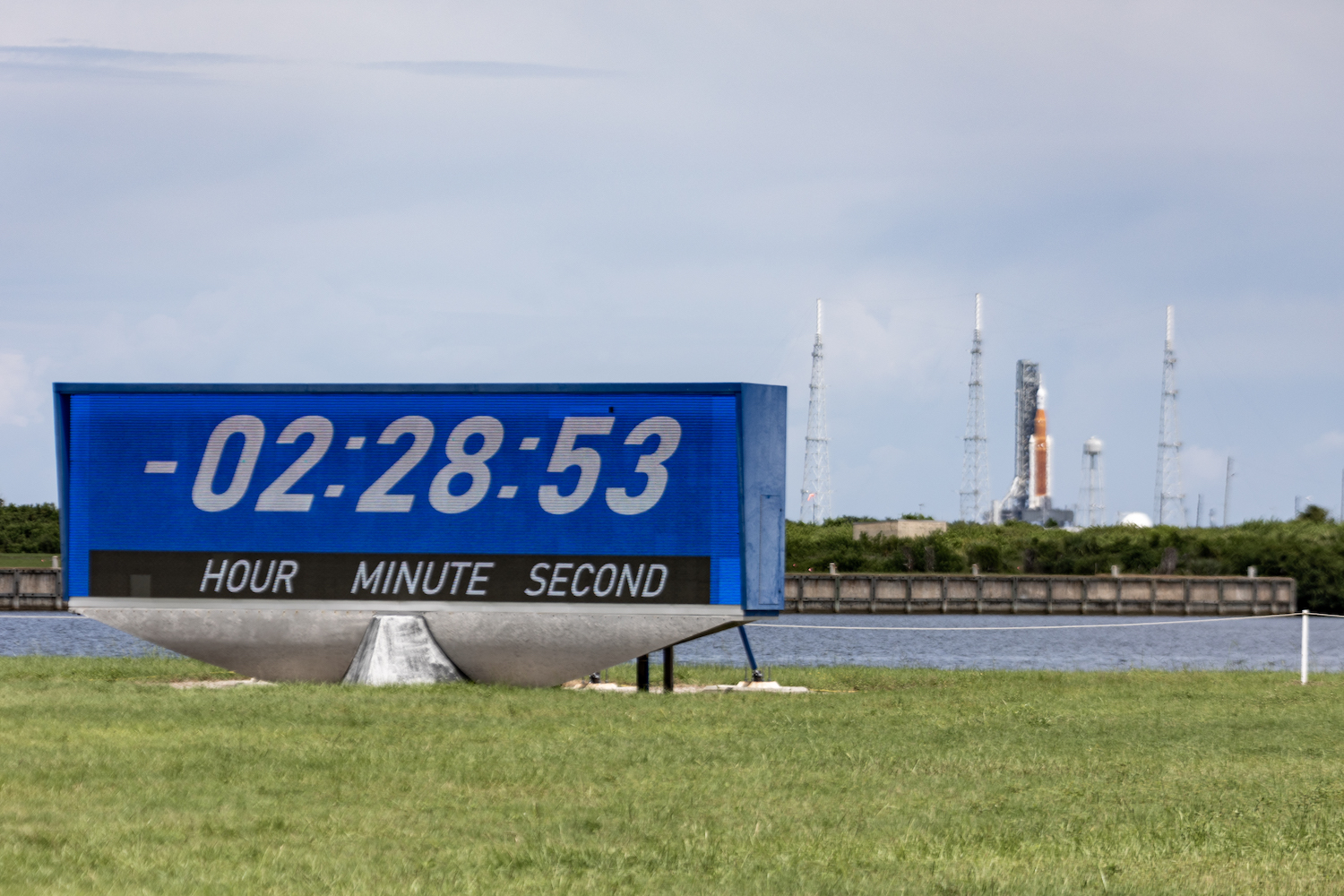
To say we are disappointed with the outcome of today’s launch attempt would be an understatement. With the development of an unmanageable leak on a hydrogen quick disconnect, Artemis 1 is unable to launch this window, pushing back NASA’s Moon mission at least a few weeks.
Another leak brings SLS to its knees
After leaks in a quick disconnect on Monday, Saturday’s separate leak shows that additional work will be needed to ensure the rocket is ready to fly. Hydrogen is a pesky fuel to work with – it’s the smallest molecule on the periodic table, and when it’s being pushed through valves and ports, it tends to find its way out. This means the tolerance on these seals has to be exact to keep the liquid hydrogen from leaking out. This is a difficult task, and sometimes works, and other times won’t work for unknown reasons.
This is why we saw launch control teams attempt to fix the leak by basically turning it off and back on – warming the seal location up and then rechilling it by flowing hydrogen back through the line to shock it and reseat the disconnect. This successfully fixed a ‘manageable’ leak on Monday, however, it couldn’t fix the ‘unmanageable’ leak on today’s attempt.
Following the scrub, NASA astronaut Victor Glover spoke to the press and stressed that, while the leak itself may have been a problem, the decision to scrub the launch was the correct one and shows that teams are making the right choices to ensure this test flight goes properly and gains all the data needed for crewed flight on Artemis 2.
SLS rollback necessary for battery systems
There are two ways to address the leak on the rocket – either roll the vehicle back to the VAB and fix it there, or provide some environmental protection at the pad and attempt to fix it there. In order to fix the leaks, the soft goods on the quick disconnect would need to be replaced. Fixing the leak at that pad would have the advantage of allowing teams to test the quick disconnect at cryogenic temperature, rather than the ambient temperature that would be necessary by any testing in the VAB.
One potential cause for part of this leak was an increase in pressure over what was expected, as the wrong valve was commanded. The wrong valve being opened was rectified within a few seconds, but it is possible that short bit of time was enough to lead to this unmanageable leak – though during a press conference NASA representatives explained that no one root cause can be selected and that the fault tree must be worked through to develop a full understanding of the issue.
In addition, this has pushed the teams to the end of the flight termination system’s battery certification. While this could theoretically be extended, and has been before, the battery certification would require a significant extension beyond the current 25 days to reach the next launch period – LP26 – which begins on September 19. This would require work with the range to potentially allow the vehicle to stay at the pad until the next launch period and the issuance of a waiver. As of now, teams are working with the plan to roll back to the Vehicle Assembly Building.
In the coming week, NASA’s teams will be able to gather more information and develop more detailed plans on how to move forward with SLS’s very first launch.
FTC: We use income earning auto affiliate links. More.




Comments